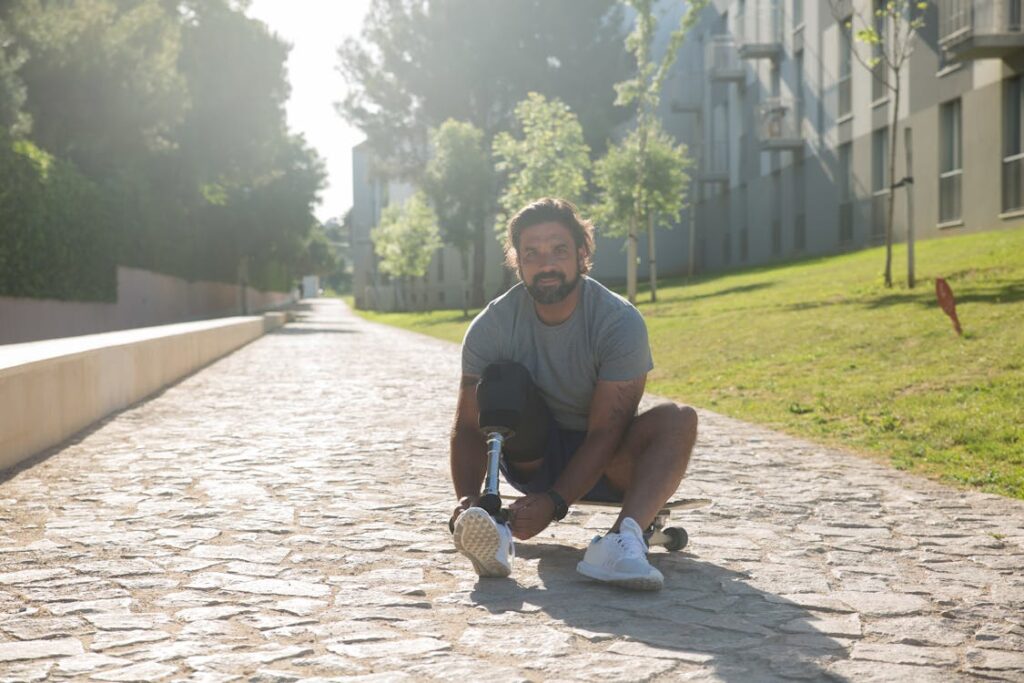When it comes to prosthetics, timing changes everything. The moment you lose a limb, your world shifts. But what many people don’t realize is that what you do next — and how soon you do it — plays a huge role in how quickly and how well you recover. This guide explains why you shouldn’t wait to get your first prosthetic limb. Early intervention can speed up healing, boost confidence, and help you return to a full life faster than you might think.
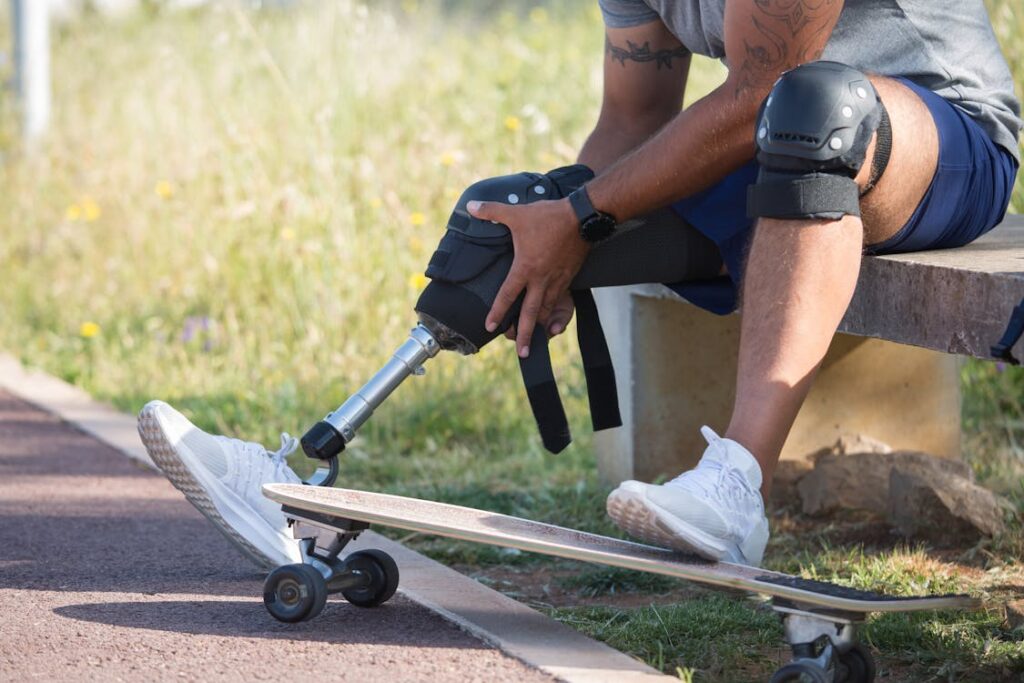
Understanding the Critical Window After Amputation
Your Body Heals Best When It Has a Purpose
Right after an amputation, your body is trying to adjust. The muscles, nerves, and tissues around the residual limb begin to adapt and shrink.
This is a natural part of healing, but if your body doesn’t receive signals that it will soon use a prosthetic limb, the healing can take a slower or less ideal path.
The body is smart. It adapts to what it thinks you need. If you don’t start planning for a prosthetic early, your body may begin to overcompensate.
This can lead to imbalances, stiffness, or loss of muscle tone in both the residual limb and the rest of your body. Early prosthetic planning gives your body a direction — a signal that it needs to prepare to walk, move, and function normally again.
Waiting Can Lead to Physical Setbacks
When someone delays getting a prosthetic, several physical problems can start to show up. Muscles begin to weaken. Joints above the amputation site may lose flexibility.
The skin can become overly sensitive or tight. You may also see bone loss if the limb isn’t being used properly or moved enough.
All of this makes it harder to walk or move once you finally get the prosthetic. It’s like trying to run a race after sitting still for six months. The longer you wait, the more your body becomes unprepared — and getting back on your feet becomes a bigger challenge.
Faster Fitting = Faster Freedom
Studies have shown that people who receive their prosthetic limb sooner are more likely to regain their mobility and independence faster.
They’re able to return to daily activities like climbing stairs, going for walks, and even returning to work — sometimes within a few months. The mental and emotional benefits are just as powerful as the physical ones.
The Emotional Benefits of Early Prosthetic Fitting
Hope Comes Sooner When You’re Already Moving Forward
One of the hardest parts of losing a limb is the mental and emotional weight that comes with it. People often feel grief, sadness, anxiety, or even anger. These feelings are completely normal. But staying stuck in that emotional space for too long can make recovery even harder.
Early fitting of a prosthetic limb often brings a powerful sense of hope. It gives people something to look forward to. They can see progress. They know they’re moving ahead. That feeling alone — the idea that life isn’t over — can reduce anxiety and even depression.
More Confidence, Less Fear
The longer someone goes without a prosthetic, the more their fears grow. They may start to avoid social situations or stop trying to move around on their own.
They might feel like their body no longer belongs to them. But getting a prosthetic sooner — even just a test socket or temporary one — helps restore confidence. People feel like they’re in control again. They can see themselves as whole, not broken.
Confidence plays a huge role in rehabilitation. A person who believes in their ability to recover is far more likely to follow through with physical therapy, push through challenges, and try new things.
Mental Health and Movement Are Connected
Movement isn’t just about getting from one place to another. It’s deeply tied to how we feel. When someone starts walking again — even a few steps — their brain releases chemicals like dopamine and serotonin.
These are natural mood boosters. They reduce stress, help with sleep, and improve overall emotional well-being.
That’s why early prosthetic fitting is one of the best mental health tools after amputation. It helps people feel human again.
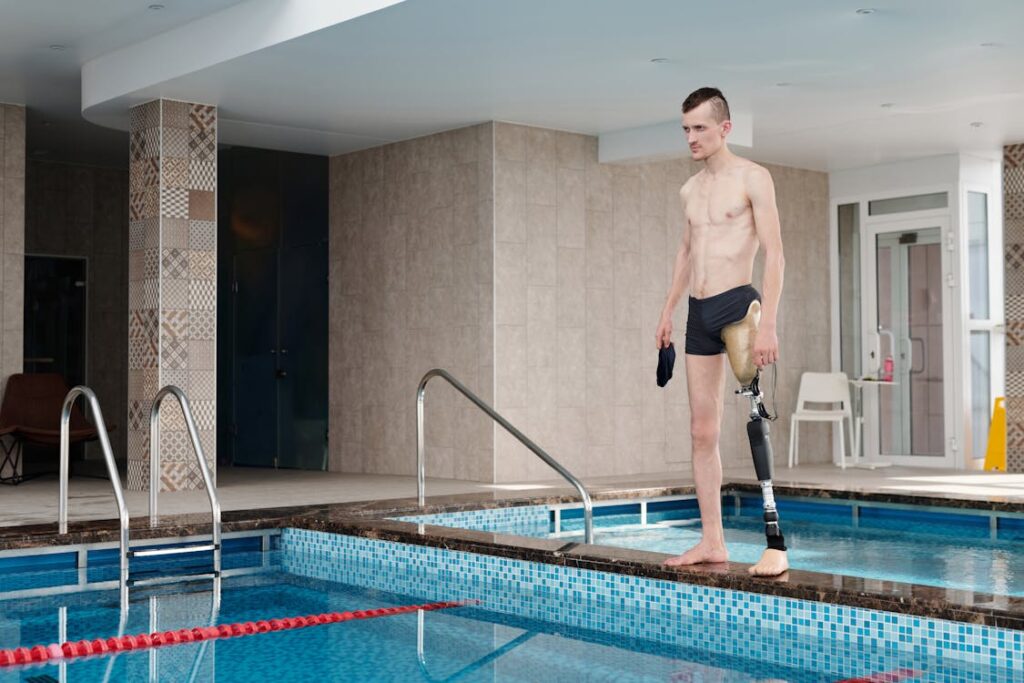
How Early Planning Changes Everything
You Don’t Have to Wait Until Healing Is ‘Perfect’
A common myth is that you need to be fully healed before starting the prosthetic process. That’s not true. In fact, early planning doesn’t mean strapping on a leg or arm right away — it means getting ready in stages.
As soon as your wound starts healing, your prosthetist can begin measurements, casting, and helping you understand what to expect. They may create a temporary prosthetic or training limb. These early steps prepare your body and mind for what’s coming next.
You might start using a shrinker sock to help shape the limb. You might do simple strengthening exercises. You might even try standing or taking steps with support. All of these small efforts add up to big results.
You and Your Prosthetist Become a Team
When you get started early, you build a stronger bond with your prosthetist. They get to know your lifestyle, your goals, and your challenges. That means they can make better recommendations for your prosthetic limb — and fine-tune it as your needs change.
You’re not just handed a limb and sent on your way. You work together, step by step, to get the fit, function, and comfort just right. That relationship is easier to build when it starts early.
Physical Therapy Can Begin Sooner Too
Another benefit of early planning is early rehab. You don’t have to wait months to start moving again. Physical therapy can begin with stretching, strength training, balance practice, and even simple weight shifting.
Your body stays active, your mind stays engaged, and your confidence grows every day.
Therapists can also teach you how to care for your residual limb, reduce swelling, manage pain, and prevent issues like contractures or sores. These early lessons are priceless in the long run.
Why Early Prosthetic Use Helps With Long-Term Success
Prevents Bad Habits Before They Start
The human body is quick to form habits — good or bad. When someone learns to move without a prosthetic for too long, they may develop poor walking patterns or rely too much on assistive devices.
They may start to put all their weight on one side of their body, leading to back pain or hip issues.
Early prosthetic use keeps the body balanced. It encourages natural movement and prevents the formation of harmful habits. It’s much easier to teach a new skill than it is to unlearn a bad one.
Better Limb Shaping and Fit
The shape of your residual limb changes over time. But without the right support and compression, it might not shape itself in the best way.
That can lead to poor prosthetic fit down the line. Early use of shrinker socks, liners, and even test sockets helps guide the limb into a shape that works better with prosthetic components.
This makes future fittings more comfortable and reduces the number of adjustments you’ll need later on. A better fit means fewer problems, less pain, and more time doing what you love.
More Natural Gait and Function
People who begin walking with a prosthetic earlier tend to develop a more natural gait. Their stride is smoother. Their balance is better. Their muscle memory kicks in faster. And because their body hasn’t had time to “forget” how to walk or move, they adapt more easily.
That’s why early users often feel more connected to their prosthetic limb. It doesn’t feel like a foreign object — it feels like part of them.
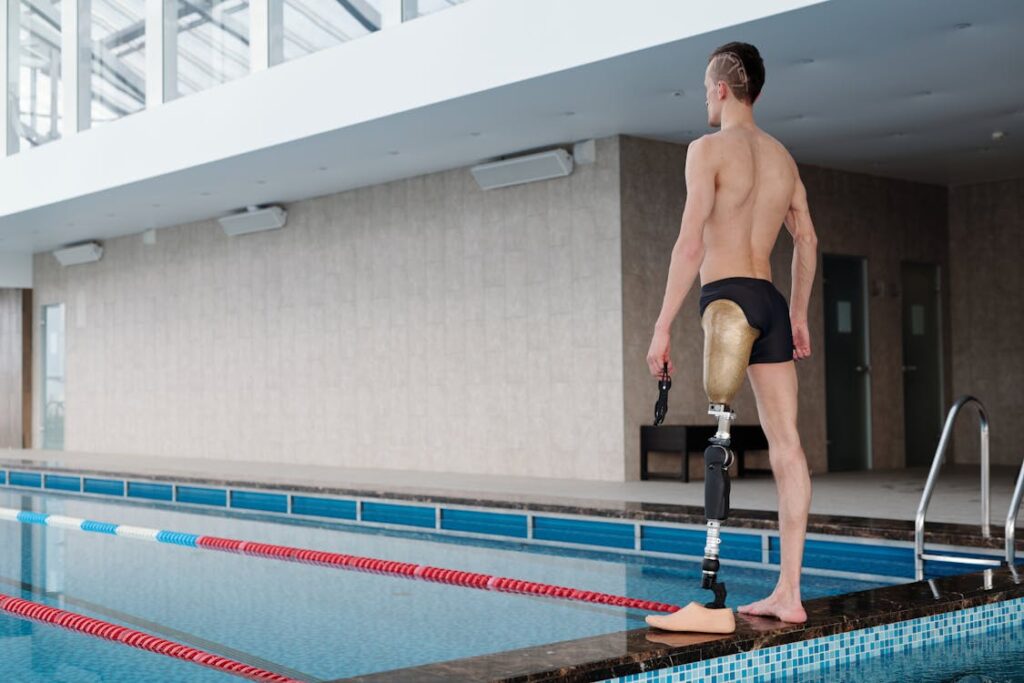
Why Waiting Can Slow Everything Down
Delays Can Create a Chain Reaction
Waiting for your first limb can set off a domino effect. When you wait too long, healing slows down. Muscle loss increases. Emotional struggles deepen. The longer you go without a prosthetic, the harder it is to get used to one later.
You may find yourself feeling “stuck” in recovery. That sense of being stuck can lead to frustration, anger, or even withdrawal. You might lose trust in the process. You might give up on goals that once felt within reach.
All of this can be avoided by taking early steps — even small ones — toward prosthetic use.
Later Fittings Often Mean More Complications
People who wait too long often need extra fittings, more therapy, and more time to adjust. Their limbs may not hold the shape needed for a stable prosthetic. Their balance may be off. Their stamina may be low. It’s not impossible to recover, but it’s definitely harder.
You also run the risk of developing health issues related to inactivity. These might include weight gain, joint pain, high blood pressure, or even cardiovascular problems. The body thrives on movement — and prosthetics help you move.
What Early Prosthetic Planning Looks Like at Robobionics
We Begin With You From Day One
At Robobionics, we don’t wait. The moment your doctor says you’re ready to begin thinking about a prosthetic, we’re ready to step in. Our team meets you where you are — physically, mentally, and emotionally. We assess your limb, talk about your lifestyle, and design a plan tailored just for you.
We use advanced 3D scanning and digital tools to take early measurements. We explain every step so you feel confident and informed. And we stay in constant contact with your surgical team and rehab specialists to make sure everyone is on the same page.
Training Limbs and Test Sockets Available Quickly
We don’t make you wait for a finished product. Our team can create temporary prosthetics and training sockets early in the process. These allow you to begin standing, balancing, and even walking while your residual limb continues to heal and shape itself.
These early-stage devices are lightweight, safe, and designed to help you build strength and confidence. We adjust them regularly so they keep up with your body’s progress.
Your Success Is Our Shared Goal
We measure our success not by how fast we build your prosthetic — but by how fast you get back to doing what you love. Whether that’s running after your grandkids, getting back to work, or simply standing on your own, we’re here to support you.
We’re with you from start to finish, offering guidance, maintenance, adjustments, and emotional support every step of the way.

How Early Prosthetic Use Supports Family and Social Reintegration
Your Loved Ones Heal Alongside You
When you lose a limb, you’re not the only one who feels the change — your family feels it too. Spouses, parents, children, and close friends all want to help but may not always know how.
They may worry about saying the wrong thing or doing too much or too little. In some cases, this leads to awkwardness or distance in the relationship. That’s why early prosthetic use can be a powerful tool not just for your recovery, but also for theirs.
When your loved ones see you start moving again, standing up, or walking with your prosthetic — even if just for a few steps — it reassures them. It gives them a signal that things are going to be okay.
It brings hope back into the home. It reduces fear. You begin to shift from being a “patient” in their eyes to being the strong, capable version of yourself they’ve always known.
This effect is especially important if you have young children. Kids are observant. If they see you struggling without progress, they might internalize stress or anxiety. But if they see you wearing a prosthetic and actively working toward your goals, it helps them feel safe and secure.
Social Life Rebounds Faster When Mobility Returns Early
Another major benefit of early prosthetic fitting is social reintegration. After an amputation, it’s easy to feel isolated. You may not want to go out, meet friends, or attend events because you don’t feel like yourself.
Maybe you worry about how people will look at you, or you don’t want to explain what happened. All these feelings are completely valid — and they’re also very common.
But as soon as you begin using a prosthetic and regaining your independence, those walls start to come down. You can go out for coffee, take part in family functions, or even travel. You start doing the little things that make life enjoyable again.
And here’s what’s surprising — the earlier this happens, the easier it becomes. When you show up with a prosthetic early on, people naturally adjust their perception quickly.
They’re impressed by your determination, not focused on your limb loss. The longer you delay, the more tension and questions can build. Early prosthetic use helps you reclaim your place in the world, on your own terms.
You Become a Role Model — Whether You Realize It or Not
One of the most inspiring things about early prosthetic intervention is how it turns amputees into quiet leaders. You might not realize it, but the moment you start walking again, you’re showing others — including other amputees — what’s possible. You’re telling a powerful story with every step you take.
Many people who receive prosthetics later on cite early users as their main source of motivation. They see someone else recovering, moving forward, and living life again, and it gives them the push to believe in themselves.
By starting early, you not only help yourself, you pave the way for others who are watching.
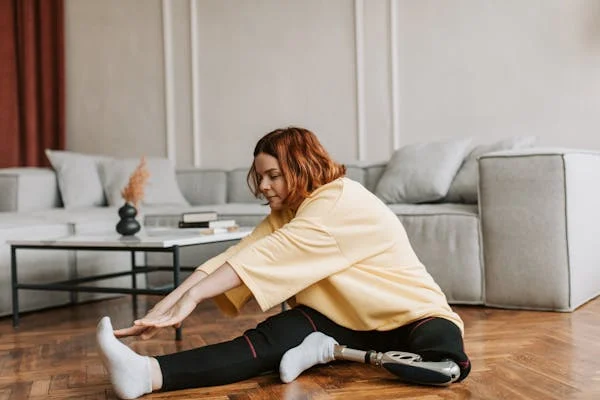
The Economic Advantages of Starting Early
Delaying Care Often Increases Costs
Many people assume that waiting to get a prosthetic will save them money — but the truth is often the opposite. When you delay intervention, you may face more medical complications: contractures, pressure sores, infections, or even rehospitalization due to falls or inactivity.
These setbacks often come with new medical bills, extra appointments, and extended rehab.
On the other hand, early intervention helps streamline your recovery. You move more, heal faster, and reduce your dependency on medication or long-term care services. This adds up to fewer expenses in the long run.
For example, at Robobionics, patients who start early tend to complete their rehab programs faster, require fewer socket changes, and report better fit with their first definitive limb. That saves on follow-up fittings and adjustments.
Return to Work Sooner With Early Mobility
Another major economic benefit? A faster return to work. Whether you have a desk job, work in retail, or manage your own business, getting back to work isn’t just about money — it’s about self-worth. It gives your days structure and purpose.
With early prosthetic fitting, most people are able to resume some level of work within a few months — sometimes even earlier. Even if you’re not ready for full-time hours, being active again gives you the mental boost to start planning your future.
That means less time relying on support, and more time investing in your independence.
And employers often look favorably on those who actively work on their recovery. It shows commitment, resilience, and a positive attitude.
Financial Support May Depend on Your Timing
In India, some government and private insurance schemes offer reimbursement or funding for prosthetic limbs, but eligibility can sometimes depend on timing. Starting your prosthetic journey early ensures that your treatment plan is well documented and aligns with expected recovery pathways.
At Robobionics, we help patients with financial paperwork, insurance documentation, and assistive tech grants — but the smoother cases are usually the ones that begin early. Delayed applications may face additional scrutiny or reduced coverage if treatment doesn’t match ideal medical timelines.
So when you begin early, you’re not just moving physically — you’re setting yourself up for better financial protection too.
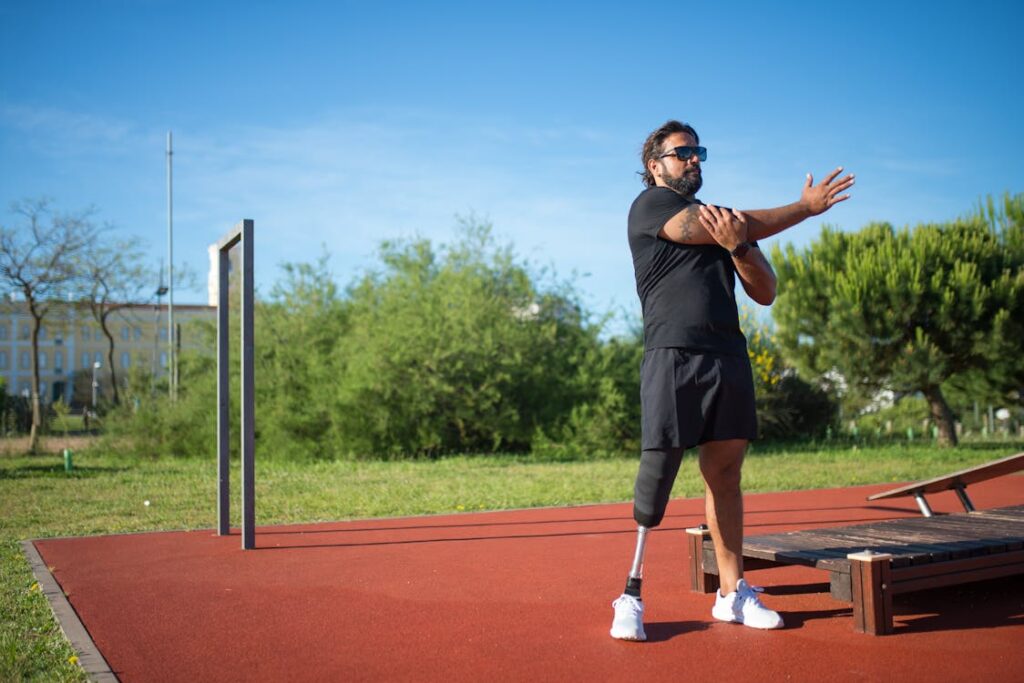
Technological Readiness and Early Fitting: How Innovation Works in Your Favor
Modern Tech Enables Faster, More Comfortable First Fits
Twenty years ago, early prosthetic fitting was harder. Healing took longer. Devices were bulkier. And adjustments were slow. But things have changed.
Today’s technology allows prosthetists to design and fit temporary prosthetic limbs just weeks after surgery. At Robobionics, we use 3D limb scanning and precision digital modeling to create early-stage sockets that are light, breathable, and adaptable. That means even if your limb shape changes during recovery, your prosthetic can keep up.
This ability to intervene early and adjust in real time is a game changer. You’re not waiting for months just to get started — you’re taking real steps forward while your body continues to heal.
Smart Sockets and Sensor Feedback Improve Early Outcomes
Our newest generation of early-use limbs includes smart liners and sensor-enabled sockets. These can detect weight distribution, pressure points, and even micro-movements in your gait. That feedback helps us fine-tune your device long before problems arise.
These insights are incredibly helpful in the early stage of rehabilitation. They help you walk more safely and comfortably, and they teach your brain how to move with the new limb — reducing the chance of injuries or balance problems.
More importantly, this smart data builds confidence. You get proof that your body is improving, and that your prosthetic is doing what it should.
AI-Powered Customization Brings Comfort From Day One
At Robobionics, we use AI-enhanced gait analysis tools to study how your body moves in real time. These tools simulate different walking scenarios — stairs, ramps, rough surfaces — so we can optimize your prosthetic for the real world, not just the clinic.
This matters most in early fitting stages, when the difference between an okay fit and a great fit can shape your motivation to keep going. By combining early intervention with advanced customization, we make sure you don’t just walk — you walk with ease and confidence from the start.
Conclusion
Time matters. The sooner you begin your prosthetic journey, the better your outcomes — physically, mentally, and emotionally. Early intervention isn’t just a medical decision. It’s a life decision.
If you or a loved one is facing limb loss, don’t wait. Talk to your doctor. Call your prosthetist. Take the first small step. Because with the right plan, the right team, and the right attitude, that small step will lead to something big.
And remember — you don’t have to do it alone.



